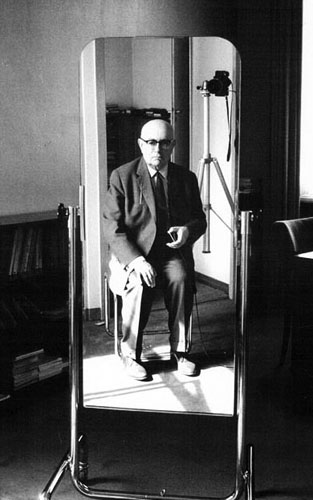John Roberts, “The Curator as Producer: Aesthetic Reason, Nonaesthetic Reason, and Infinite Ideation,” Manifesta Journal 10 (2010): 51–57. “Now cognitively and epistemologically, this is true: artists have no special native attributes that distinguish their skills from non-artistic skills. Artists are not the possessors of inherent powers of creativity; … And this, indeed, is the great liberatory thrust of the twentieth-century avant-garde and modernism, to which Benjamin’s writing on the author as producer contributed. Art’s possible meaning, function, and aesthetic value is necessarily bound up with its democratic distribution. But if these conditions of production and distribution have altered the intellectual landscape of art, this does not mean that what artists do is no different from what non-artists do. Artists may imitate and borrow from the skills and attributes of non-artists, but what artists might make of these skills and attributes is necessarily very different from non-artistic practices. For, if art is above all what opens itself up to infinite ideation (Friedrich Schlegel), artistic practices necessarily set out from a place very different from non-artistic reason.”
Hito Steyerl, “Art as Occupation: Claims for an Autonomy of Life,” in The Wretched of the Screen (Berlin: Sternberg Press/e-flux journal, 2012), 110. “Nowadays, the invasion of life by art is not the exception, but the rule. Artistic autonomy was meant to separate art from the zone of daily routine—from mundane life, intentionality, utility, production, and instrumental reason—in order to distance it from rules of efficiency and social coercion. But this incompletely segregated area then incorporated all that it broke from in the first place, recasting the old order within its own aesthetic paradigms. The incorporation of art within life was once a political project, but the incorporation of life within art is now an aesthetic project.”
Jacques Rancière, Aesthetics and its Discontents (Cambridge: Polity Press, 2009).
Ibid. See the section “Antinomies of Modernism,” 61–107.
Ibid. See the chapter “Lyotard and the Aesthetics of the sublime: A Counter-reading of Kant,” 88–107; 93–94.
As mentioned above, Adorno rejects art’s universality.
Jacques Rancière, The Aesthetic Unconscious (Cambridge, Polity Press, 2009), 62.
Ibid., 84, quoted from Sigmund Freud, “The Moses of Michelangelo,” Standard Edition, 13: 211–12.
Theodor Adorno, Aesthetic Theory (London: Continuum, 2002), 11.
